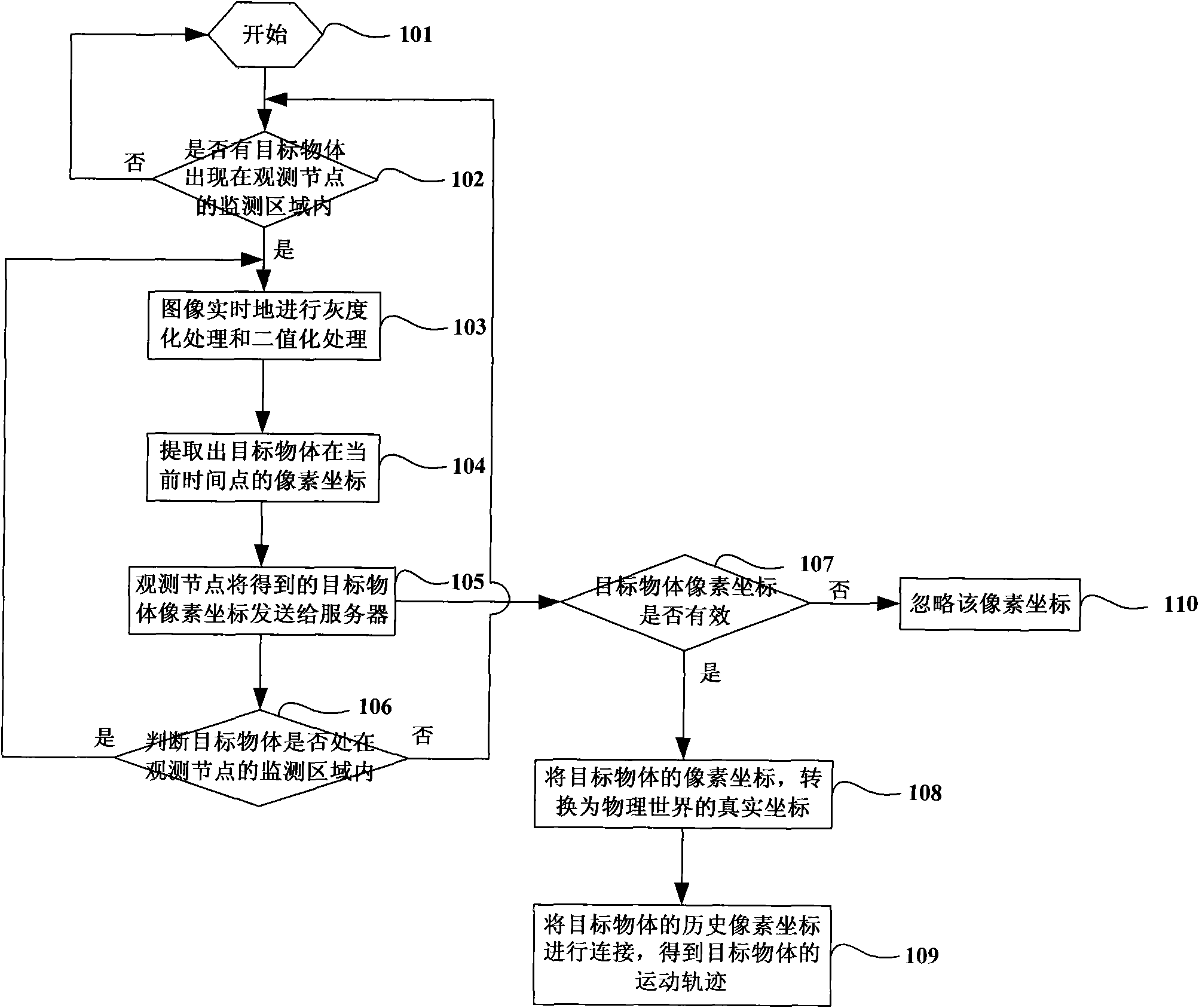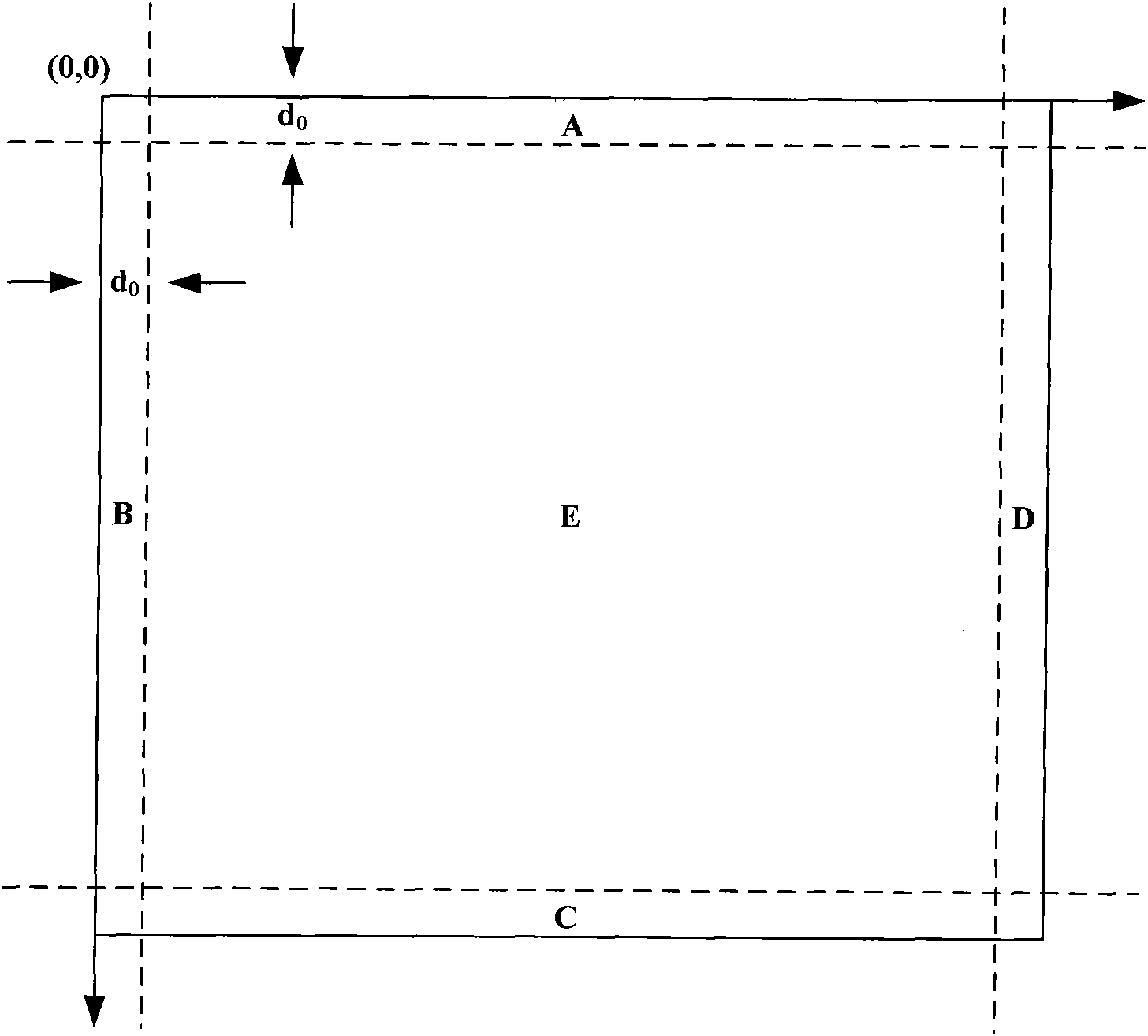Target tracking method based on image sensor network
An image sensor and target tracking technology, applied in image analysis, image data processing, instruments, etc., can solve the problems of difficult template matching, unstable template matching, complex structure, etc., to achieve the effect of eliminating the calculation process
- Summary
- Abstract
- Description
- Claims
- Application Information
AI Technical Summary
Problems solved by technology
Method used
Image
Examples
Embodiment 1
[0041]In the present invention, the observation node detects the target object in two ways, one is that each observation node periodically detects whether a target appears in the monitoring area through its own image sensor module; the other is through Observation nodes constantly listen to messages sent from neighbor observation nodes to determine whether there is a target that will appear in the monitoring area. This embodiment adopts the first method.
[0042] figure 2 It is the implementation flowchart of Embodiment 1 of the present invention. figure 2 Among them, the target tracking method based on the image sensor network proposed by the present invention is realized through the following steps:
[0043] Step 101: Start target object detection.
[0044] Step 102: Each observation node periodically detects whether a target object appears in the monitoring area through its own image sensor module, and if so, executes Step 103; otherwise, returns to Step 101 to continu...
Embodiment 2
[0064] In this embodiment, the observation node is used to continuously listen to messages sent from neighbor observation nodes to determine whether there is a target that will appear in the monitoring area. Figure 4 It is the implementation flowchart of the second embodiment of the present invention. Figure 4 Among them, the target tracking method based on the image sensor network proposed by the present invention is realized through the following steps:
[0065] Step 201: Start target object detection.
[0066] Step 202: Each observation node periodically detects messages sent from neighboring observation nodes to determine whether a target object will appear in the monitoring area of the observation node. If yes, execute step 203; otherwise, return to step 201 to continue detection.
[0067] Step 203: Collect images according to the time interval set by the observation node, and perform grayscale processing and binarization processing on the collected images in real t...
PUM
 Login to View More
Login to View More Abstract
Description
Claims
Application Information
 Login to View More
Login to View More - R&D
- Intellectual Property
- Life Sciences
- Materials
- Tech Scout
- Unparalleled Data Quality
- Higher Quality Content
- 60% Fewer Hallucinations
Browse by: Latest US Patents, China's latest patents, Technical Efficacy Thesaurus, Application Domain, Technology Topic, Popular Technical Reports.
© 2025 PatSnap. All rights reserved.Legal|Privacy policy|Modern Slavery Act Transparency Statement|Sitemap|About US| Contact US: help@patsnap.com



